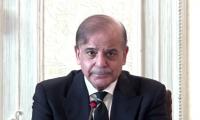KARACHI: Pakistan’s July-November current account deficit widened sharply from a year earlier after imports accelerated while crude prices surged, data from the State Bank of Pakistan (SBP) showed on Monday.
The central bank reported a current account deficit of $7.1 billion, or 5.3 percent of GDP in the five months of the current fiscal year versus a surplus of $1.9 billion a year ago.
The main contributing factor to the country’s deteriorating balance of payments was a widening trade deficit, caused by the import bill that rose 64 percent to $29.9 billion in July-November FY2022.
However, increase in exports and healthy remittances did not help narrow the current account gap. Exports increased 29 percent to $12.33 billion. Pakistani citizens employed abroad sent home $12.9 billion in July-November FY2022, a 10 percent increase from a year earlier.
Many analysts expected that the recent policy actions by the State Bank of Pakistan, including policy rate hikes and curbs on consumer finance, would push down imports and support the current account deficit, but acceleration in economic recovery and sky-high international commodity prices affected the trade balance negatively.
In November, the current account deficit stood at $1.9 billion. That was in line with the $2-2.5 billion forecast by the analysts. The deficit increased by 8.4 percent month-on-month. The country posted a surplus of $563 million in November 2020.
The deteriorating external position seems to have put the spotlight on the country’s ability to service its growing foreign debt. The external financing needs during FY2022 are estimated at $26 billion.
The large current account deficit has also weakened the rupee by 11 percent versus the dollar since July, 2021. The current account gap remains widened, with the country’s economy recovering from the pandemic.
The SBP expects the current account deficit to be around 4 percent of gross domestic product this year, higher than the earlier projection of 2-3 percent.
The current account imbalance would likely be fully financed from external inflows with foreign exchange reserves remaining at adequate levels through the remaining fiscal, resuming their growth trajectory as global commodity prices ease and import demand moderates, according to the monetary policy statement issued this month.
“We expect CAD-related ambiguity to be reduced post February 2022, as TERF (Temporary Economic Refinance Facility) related payment and imports of wheat and sugar will end due to expected bumper crops. Importantly, steel, oil, and coal prices have started to cool off, and we expect other commodities to follow suit,” said an analyst at Insight Securities.
An undated image of the Honda Atlas Cars logo. — AFP/FileKARACHI: Honda Atlas Cars Limited celebrated its 30-year...
InfraZamin and Sundridge Foods Limited officials posing for photograph. — Facebook@InfraZaminPakistan/FileKARACHI:...
This image shows an advertisement stall of BankIslami. — Facebook@bipl.official/FileKARACHI: JS Bank and BankIslami...
PCJCCI logo can be seen on a computer screen, image taken on November 5, 2024. — Thenews/AquibAliLAHORE: The...
A Wall Street sign hangs in front of a US Flag outside the New York Stock Exchange before the Federal Reserve...
A representational image of young people working in a company. — AFP/FileLAHORE: The ability of our economy to...







